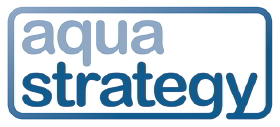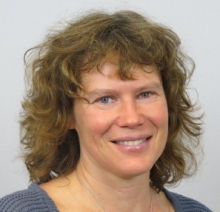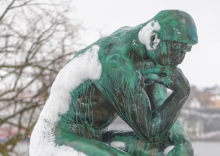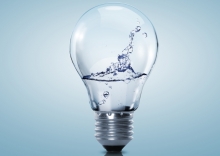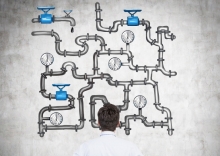- Features
Issue:

‘Are you operating or intending to implement struvite recovery at your WWTP? Meet European struvite recovery operators willing to share their practical experience and learn more about running recovery technologies.’ That was the invitation on the web page announcing the launch meeting of the Struvite Recovery & Recycling Learning Alliance.
The workshop was held this month alongside the official opening of the Omzet Amersfoort sewage treatment plant upgrade featuring the first combined use of the Wasstrip, Pearl and LysoTherm processes in the world.
Struvite-based recovery of phosphates has emerged as the current most viable opportunity for recycling of this nutrient from sewage treatment, with the number of full scale plants growing all the time. Developments have therefore moved from being just about research to full scale operation and markets.
Launch of the alliance is an initiative of the Accelerating Resource Recovery from the Water Cycle (ARREAU) action group under the European Innovation Partnership on Water (EIP Water). Dr Christian Kabbe of the Kompetenzzentrum Wasser Berlin leads the phosphates work of ARREAU. ‘One of the goals of ARREAU is to accelerate the market uptake and establishment of resource recovery from the water cycle,’ he explains.
Another aim of the group is to bring together full scale operators and to engage potential users. ‘I think that is the best way to go for market replication,’ Kabbe comments. ‘For the newcomers, it is always good to hear the real experience from existing operators,’ he says, noting that technology providers may not always give the full picture. ‘I think it is most important to get the real operating experience spread out to the potential customers,’ he adds.
The intention, according to Kabbe, it to hold an alliance meeting maybe once or twice a year. ‘It depends on the demand and the requests from the operational side,’ he says.
The process for producing struvite is understood, but there are many variables from site to site, notes Kabbe. ‘That’s I think also the big benefit of this learning alliance – to bring all this fragmented experience and information we have scattered around Europe or even globally, and compile it to extract a kind of best practice for struvite precipitation and crystallisation,’ he adds.
Developments such as the EU’s increasing focus on the circular economy, including proposed new regulations covering certification of recycled nutrients in fertilisers, indicate we are entering a new phase, and struvite is set to feature prominently in developments for the water sector. ‘It is why we decided to focus on struvite only,’ says Kabbe. ‘Most facilities for phosphate recovery finally yield struvite, and struvite is one of the hottest candidates of these recycled materials in terms of nutrients for fertiliser use in the new EU Fertiliser Regulation.’
Keywords:
- Europe, resource recovery, phosphates, sewage treatment
